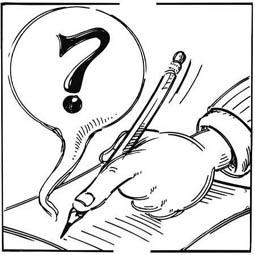How to Become a Cover Letter Writing Machine
Published: Jul 18, 2012

Writing an excellent cover letter doesn’t have to be difficult—but it does take preparation and time. The good news? Once you have developed a stellar cover letter, you can use it as a template for multiple job applications. In this two-part post, I’ll take you through the steps of writing a successful cover letter.
Step One: Create a Template
If you’re sending out several cover letters a day as part of your job search, creating a customizable cover letter template will save you a lot of time and effort. The cover letter template will contain basic information about yourself that doesn’t change, irrespective of the job you’re applying for.
First, make sure you have the correct cover letter structure in place: the header should contain your address, the date, and the employer’s contact information (the latter, of course, will change for each letter):
123 Main Street
Anytown, NY 12345
July 18, 2012
Employer contact name, Title
Name of Company
Company Address
Dear Ms. Smith:
The first paragraph of your cover letter will be customized for each employer, so skip that part for now. The body will contain a narrative of your qualifications, and for the most part, will stay the same for each cover letter that you write. (One exception is if you are applying to jobs in two or more different fields—in that case, you should tailor the experience you focus on to the industry you are targeting.)
Starting with your current position, explain what you currently do and what you’ve accomplished in the past. (If you’ve just graduated or are unemployed, talk about your most recent experience.) Resist the urge to use exactly the same language that appears on your resume—this is your chance to be more descriptive than the confines of your resume allow.
As the Web Designer for my school’s Technology Services department, I design and build student group websites, using strategic HTML/CSS coding to create accessible, consistent and user-focused designs. I am also exposed to database architecture and query tools that are incorporated into the websites I create. Previously, I served as Webmaster for my fraternity, managing the content and layout of my chapter’s website while maintaining the brand identity of a national organization.
Notice how the author of this cover letter describes exactly what his responsibilities were in each position and also highlights the skills he learned. Think about the types of skills your potential employers are looking for, and make sure to emphasize exactly how you have gained those.
As a camp counselor for Camp Big Lake, I supervised 3rd and 4th grade students throughout the summer. I was solely responsible for planning and executing water sports activities for my group of fifteen campers; this experience helped me to develop a strong sense of accountability. Currently, as a math tutor at my university’s Academic Resources Center, I teach advanced calculus to my peers who are struggling with their classwork. Although it can be challenging to identify the issues that prevent a student from understanding a math concept, I find it extremely rewarding to apply my own knowledge in order to help my peers.
Didn’t think you could include your summer at Camp Big Lake in a cover letter or resume? Think again! If you are a student or recent graduate, it’s completely acceptable—and encouraged—to include any relevant job experience you have, whether it’s waitressing at the local diner or filing papers for your parents’ family business. The key is presenting these experiences in a way that makes them relevant to your job search.
The section of your cover letter detailing your background can be either one or two paragraphs, depending on how extensive your experience is. In describing your work experience, use words and phrases such as:
- “In this capacity, I…”
- “In that position, I was responsible for…”
- “Having worked as a [position], I am very experienced in…”
Remember: don’t just tell employers that you have the skills they are looking for—explain exactly how you acquired them. Conversely, don’t just list off your experiences—tell employers what skills you gained in each position.
Your template should also include a professional-sounding conclusion:
I am confident that my background in web development would allow me to contribute significantly to [name of organization]. I would be thrilled to have the opportunity to discuss this position with you further. Thank you in advance for your consideration.
Finish it off with a formal signature line—options include “Sincerely,” “Sincerely yours,” and “Kind regards.” If you are emailing your cover letter as an attachment, you do not need to scan in a handwritten signature—simply typing your full name is perfectly acceptable.
Next week, I’ll explain how to customize your cover letter template to target each of your employers specifically. Best of luck!
